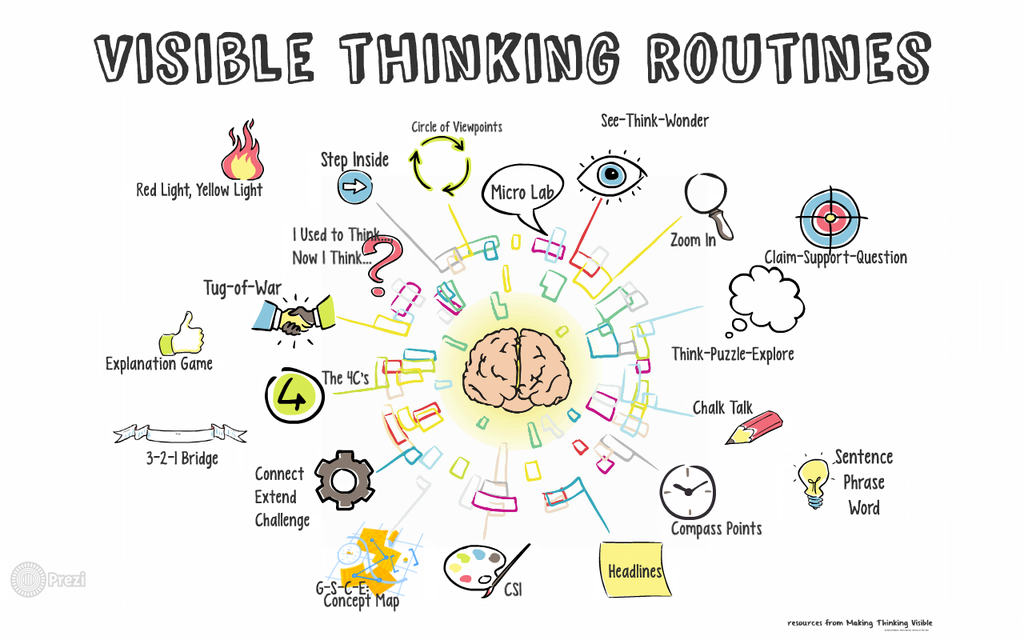
Everyone has heard of the television station MTV. It has been around for ages and what started as a place for music videos now hosts popular television shows. However, the education strategies for MTV are something totally different. What we are talking about today is Making Thinking Visible. These are strategies for educators that can help students push surface level thinking further and allow for communication and cooperation among the classroom.
Three strategies we will be talking about today are:
- Headlines
- What Makes You Say That?
- The Explanation Game
Headlines
This MTV strategy is done by having each student read a certain text and come up with the big ideas or important themes of a text. Each student is responsible for creating their own headline for the article and shares their headline with the class. For example, an article about how bees help the environment might be given the headline, “Bees: Earth’s Best Friend?”
There are several advantages to this strategy:
- Gets all the students involved
- Helps reflect and synthesize
- Shows that taking notice of the big ideas is critical in understanding a text
- Helps students get different points of view on a text
What Makes You Say That?
This MTV strategy is done by presenting a topic, question, discussion, etc. to the class and asking them what they know, see, or feel about the subject presented. You then have other students follow up with questions like, “What makes you say that?”

The advantages to using this strategy are:
- Helps encourage evidential reasoning
- Shows the teacher isn’t the one that has all the answers
- Proves the correctness of an answer lies in the evidence provided to support it
The Explanation Game
The Explanation Game is used to understand why something is the way it is. To perform this MTV strategy, present an object or other subject and follow the steps below:
- Name it- Have the students name a feature of the object that they notice
- Explain it– Have the students present hypotheses as to what it could be and what function it might serve
- Give reason– Ask “What makes you say that?”
- Generate alternatives– Ask the students to come up with other things that it could be

This game is particularly useful in the science classroom because it shows students that you need to take a closer look at science phenomena and that more than one answer may be correct with the appropriate evidence to support the answer.
Here is a video with an interview from the author of Making Thinking Visible, Dr. Ritchhart.
Another good resource to understand MTV strategies better is this Ted Talk from Maeve Zamuner:
Making Thinking Visible is crucial for helping your students get the most out of the learning process. Using MTV strategies should not be an everyday occurrence, however, using them thoughtfully and at the right time can help not only you as a teacher to see where your students are at but also help the students to better grasp the material presented.

Hi Emma! Good job on the post. I definitely agree with you that using MTV strategies thoughtfully at the right time would be beneficial for both the students and the teacher. I like the “What Makes You Say That” strategy – what kind of activities do you think will be a good follow up after the discussion?
Great post Emma! I also posted about the “What makes you say that?” strategy. That one really stuck out to me because it encourages students to give a reasoning and back up their information/claim. It allows us, as teachers, to really see and understand what exactly is going on in their brain. What stood out to you with this strategy?